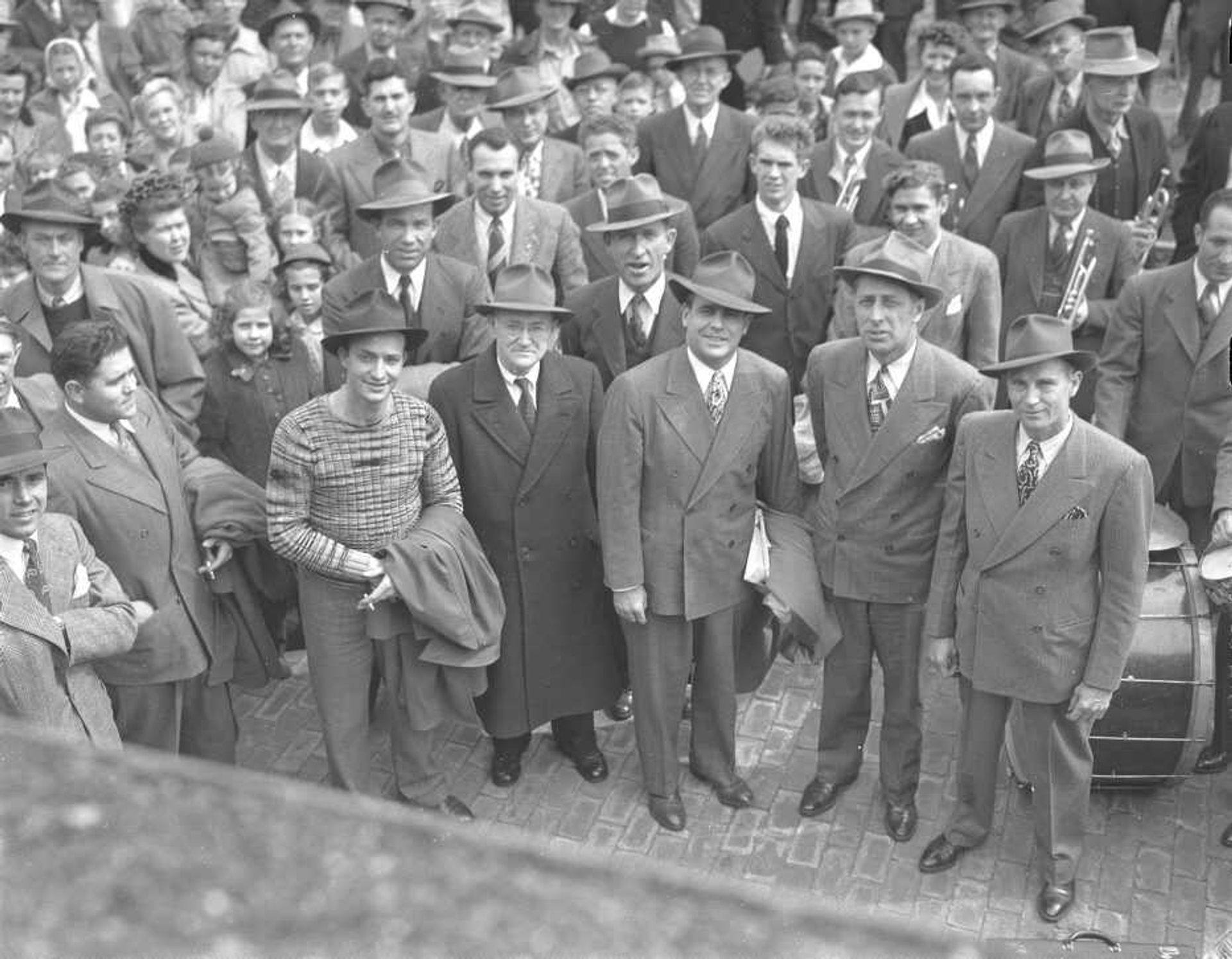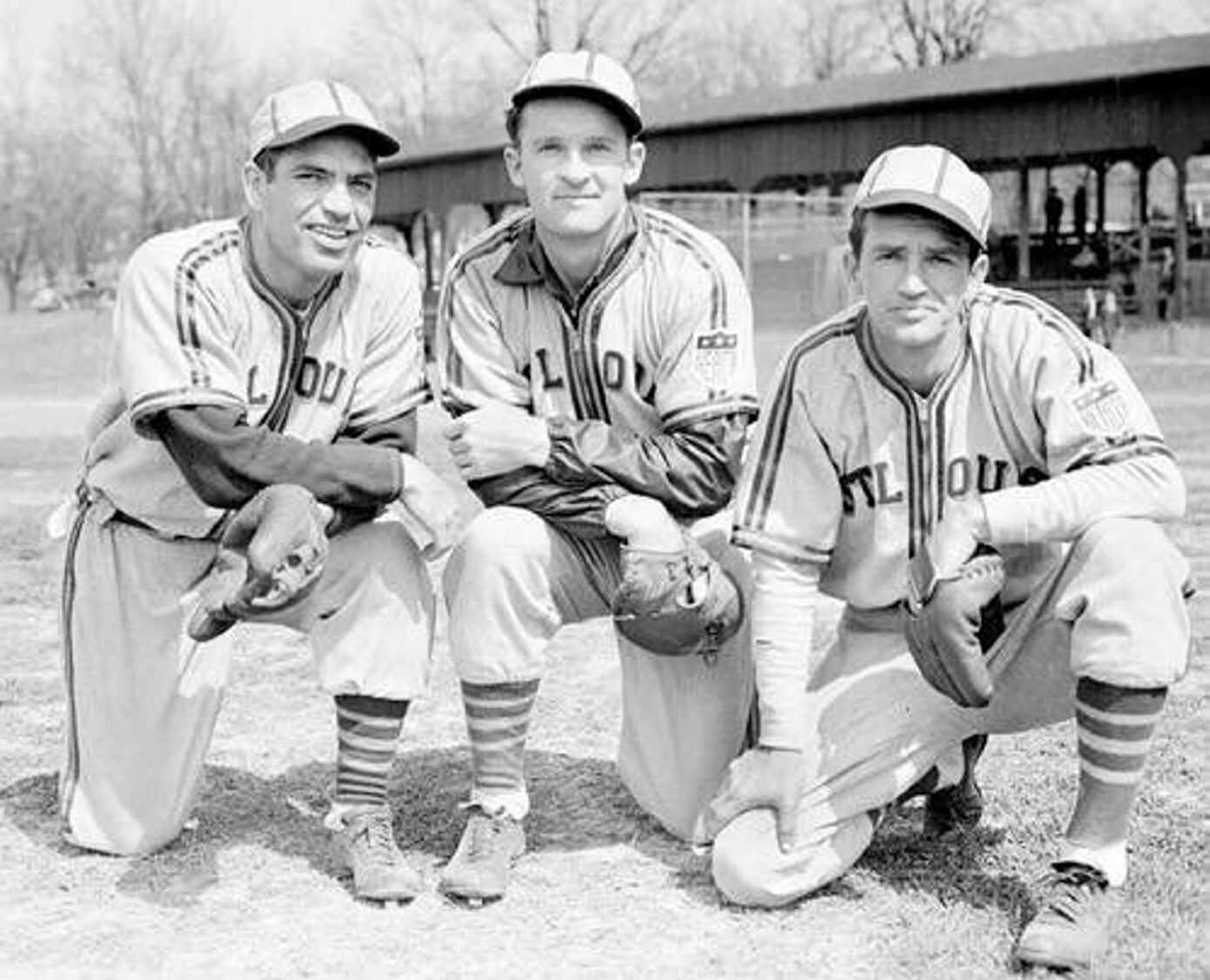This is the 12th in a series of articles with Kellerman Foundation for Historic Preservation board chairman Frank Nickell, an emeritus faculty member of Southeast Missouri State University, commenting on Show Me State history on the 200th anniversary of Missouri being received as America's 24th state in 1821.
On Thursday, another major league baseball regular season begins as the St. Louis Cardinals play at Cincinnati to kick off their 2021 campaign.
Once upon a time, eight decades ago, there were two St. Louis teams: the Redbirds and the often-forgotten Browns, the latter of which are now the Baltimore Orioles.
The Browns, who played 52 seasons in the Gateway City, leaving Missouri after the 1953 season, never enjoyed the success of their crosstown rival Cardinals.
A single magical season
There was one year when the Browns were exceptional.
It was 1944, the one and only year the team went to the World Series.
The Browns started that special '44 season by holding spring training in Cape Girardeau.
The Browns went 89-65, won the American League pennant, and lost in the Series -- as fate would have it -- to the champs of the National League, the Cardinals, in six games.
All of those Fall Classic contests were played in St. Louis' Sportsman's Park.
Wartime adjustments
In the battle between Allied and Axis powers in World War, America began limiting the consumption of various goods.
Nylon, silk, sugar and shoes, for example, were all rationed.
For the common good and to help the war effort, ration cards were utilized to limit purchases.
Also subjected to strict limits were the following: coal, fuel oil, tires, automobiles and gasoline.
Everybody tightened their belts and sacrificed in a common effort to defeat Germany, Italy and Japan -- even major league baseball.
"Transportation limits in WWII required MLB to hold spring training near to home," said historian Nickell.
"Florida was out, Arizona was out," he added, noting St. Louis' two teams chose cities relatively close by: the Cardinals went to Cairo, Illinois and the Browns selected Cape Girardeau for spring training from 1943 to 1945.
Enthusiasm
It is true Cape Girardeau has long had the amateur Capahas, who took the field for the first time in 1894, still the oldest team of its type still in existence in the United States.
Hosting a major league team, though, was quite a different experience.

"The Browns team being in Cape was a transitional event in the history of the city," Nickell said.
Bands greeted the team at the old Frisco train station and grandstands were painted by volunteers.
"The amount of baseball played today here is a consequence, in my view, of the memories of the Browns taking up residence for spring training those three years," Nickell said, adding, "Cape became 'baseball crazy' after the mid-1940s."
Cape Girardeans had the chance, in a literal way, to reach out and touch some of the game's finest players.
"You could see them up close, talk to them, even eat with them in local restaurants," Nickell said
Venues
The Browns utilized several venues while in town, according to previous reporting by the Southeast Missourian:
- Houck Field House was used for a pitchers' bullpen and team locker room.
- Fairground Park (renamed Capaha Park in 1948) was utilized for intrasquad games and contests with other teams, weather permitting.
- The Arena building was the locale for indoor practice.
"They filled the Arena Building with dirt and sod and created a baseball infield on the inside, so that players could practice double plays, bunts and squeeze plays, conduct some batting practice and so forth," said Nickell, who further highlighted Arena's importance to the Browns.
"It's often cold and wet in late February and early March in Cape, so being able to practice indoors was vital," he added.
Nickell said the Browns' manager during 1943-1945, Luke Sewell, credited the use of indoor facilities in Cape Girardeau as a contributing factor to the Browns' success.
Asked following the World Series what the key ingredient to the Browns' 1944 season was, Sewell pointed to Cape Girardeau in his answer.
"(It was) the quick start our pitchers had thanks to fine conditioning in spring training," Sewell told reporters.
Players
"The Browns had the only all-4F infield in the majors in 1944," Nickell said, referring to the designation used when men were deemed unfit for military service.
Arguably the Browns' best player during the Cape Girardeau years was shortstop Vern Stephens, who led the American League in runs batted in during 1944. He followed that performance by leading the A.L. in home runs in 1945.
Stephens would be the only member of the '44 A.L. pennant-winning team to accompany the squad to Baltimore after the 1953 season.
Other notable Browns' players who trained in Cape Girardeau included infielder Don Gutteridge, catcher Red Hayworth and pitcher Jack Kramer.
In 1945, Cape Girardeau fans were the very first to see a one-armed outfielder named Pete Gray train.
Gray, who lost his right arm in a childhood accident, played his only Major League Baseball season with the Browns.
Finances
Major League Baseball is a billion-dollar business today but during the 1940s, expenditures were far lower.
When the Browns left Cape Girardeau at the end of their first spring training in 1943, the city's then-mayor Raymond E. Beckman was quoted as saying, "The city was reimbursed $481.35. Merchants were not given a shakedown nor were we obliged to beg to make up a deficit."
The Browns reported the team left Cape Girardeau that initial spring with a profit, albeit a slim one, of $44.76.
Connect with the Southeast Missourian Newsroom:
For corrections to this story or other insights for the editor, click here. To submit a letter to the editor, click here. To learn about the Southeast Missourian’s AI Policy, click here.








